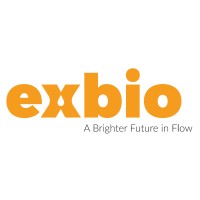CD103 Monoclonal / APC / Ber-ACT8
Product Details
| Description | CD103 / Integrin alphaE is an integrin subunit that is expressed on intraepithelial lymphocytes, epithelial dendritic cells, lamina propria-derived dendritic cells, a subpopulation of lamina propria T cells, a small subset of peripheral lymphocytes, namely T reg cells, and on activated and TGF-beta stimulated lymphocytes. CD103 is in mature form cleaved into two disulfide-linked chains (C-terminal 150 kDa chain and N-terminal 25 kDa chain). It heterodimerizes with integrin beta7 subunit to form alphaE/beta7 integrin (mucosal lymphocyte 1 antigen), which through binding E-cadherin mediates homing of lymphocytes to the intestinal epithelium, and, in addition to the role in adhesion, may serve as an accessory molecule for intraepithelial lymphocyte activation. | |
|---|---|---|
| Conjugate | APC | |
| Clone | Ber-ACT8 | |
| Target Species | Human, Non-Human Primate | |
| Applications | FC, WB, IP, IHC-Fr | |
| Supplier | EXBIO | |
| Catalog # | Sign in to view product details, citations, and spectra | |
| Size | ||
| Price | ||
| Antigen | ||
| Host | ||
| Isotype |
About CD103
Integrins are heterodimeric integral membrane proteins composed of an alpha chain and a beta chain. This gene encodes an I-domain-containing alpha integrin that undergoes post-translational cleavage in the extracellular domain, yielding disulfide-linked heavy and light chains. In combination with the beta 7 integrin, this protein forms the E-cadherin binding integrin known as the human mucosal lymphocyte-1 antigen. This protein is preferentially expressed in human intestinal intraepithelial lymphocytes (IEL), and in addition to a role in adhesion, it may serve as an accessory molecule for IEL activation. [provided by RefSeq, Jul 2008]
Integrins are heterodimeric integral membrane proteins composed of an alpha chain and a beta chain. This gene encodes an I-domain-containing alpha integrin that undergoes post-translational cleavage in the extracellular domain, yielding disulfide-linked heavy and light chains. In combination with the beta 7 integrin, this protein forms the E-cadherin binding integrin known as the human mucosal lymphocyte-1 antigen. This protein is preferentially expressed in human intestinal intraepithelial lymphocytes (IEL), and in addition to a role in adhesion, it may serve as an accessory molecule for IEL activation. [provided by RefSeq, Jul 2008]
About APC
Allophycocyanin (APC) is a fluorescent protein derived from cyanobacteria and red algae and a potent donor fluorophore to create tandem dyes that can be excited off the 633-640 nm laser. APC has an excitation peak at 650 nm and a emission peak at 660 nm.
Allophycocyanin (APC) is a fluorescent protein derived from cyanobacteria and red algae and a potent donor fluorophore to create tandem dyes that can be excited off the 633-640 nm laser. APC has an excitation peak at 650 nm and a emission peak at 660 nm.
Experiment Design Tools
Panel Builders
Looking to design a Microscopy or Flow Cytometry experiment?
Validation References
Reviews & Ratings
| Reviews |
|---|
Looking for more options?
1190 CD103 antibodies from over 41 suppliers available with over 98 conjugates.





